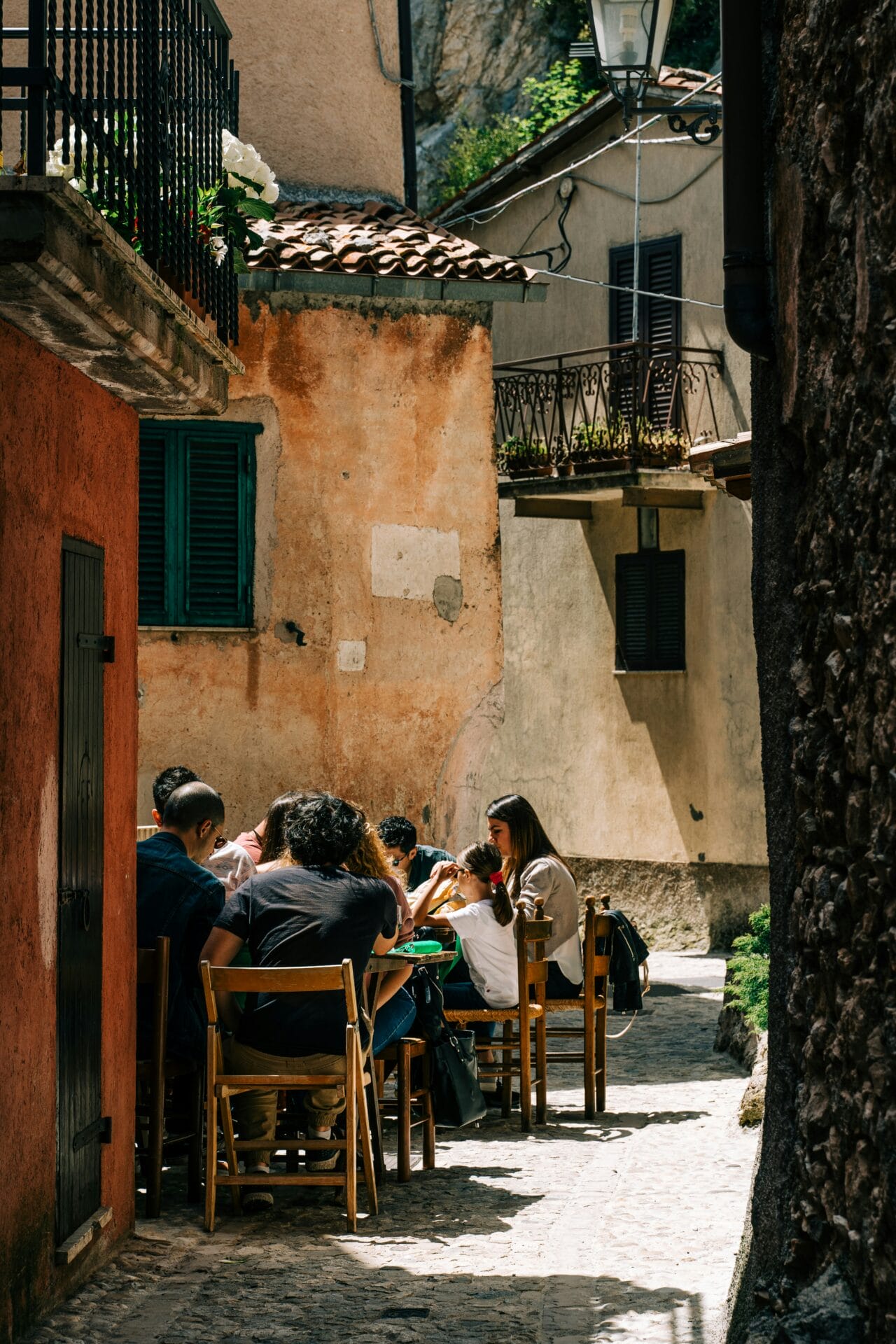Mastering Italian Greetings: How to say Hello in Italian and more
Are you fascinated by different cultures and curious about the cultural differences between Americans and Italians? In this article, we will explore these differences and provide insights into the unique aspects of each culture. From language to greetings, we will delve into the intricacies that make these two cultures distinct.
Are you curious about greeting customs in Italy and how to say hello in Italian?
In addition to mastering these greetings, we’ll explore a variety of other useful phrases that can help you connect with locals during your Italian adventures.
Your Guide to Italian Language: Hello and Beyond
Let’s start by learning some essential Italian words. Knowing key phrases can help you connect with local people and experience their culture. Saying “hello” in Italian can make a good impression. Let’s start by learning some basic Italian phrases and their English translations.

| English | Italian |
|---|---|
| Good morning! | Buongiorno! |
| Good evening! | Buonasera! |
| Goodbye! | Arrivederci! |
| Thank you! | Grazie! |
| You’re welcome! | Prego! |
| Excuse me. | Scusa. |
| I’m sorry. | Mi dispiace. |
| I would like… | Vorrei… |
| Can I have the check, please? | Posso avere il conto, per favore? |
| Where is the bathroom? | Dov’è il bagno? |
| How do I get to…? | Come arrivo a…? |
| One, two, three… | Uno, due, tre… |
| What time is it? | Che ora è? |
| Hello (formal) | Salve |
| Hi everyone | Ciao a tutti |
| Good afternoon | Buon pomeriggio |
| Welcome | Benvenuto |
| How are you? | Come stai? |
| Nice to meet you | Piacere di conoscerti |
| See you soon | A presto |
At the end of this chapter, you will find more crucial phrases and expressions that will aid you in your Italian language learning journey.
From Language to Customs: Uncovering the Cultural Disparities Between Americans and Italians
So, let’s embark on this cultural journey together and discover the fascinating diversity between Americans and Italians.
Prepare to expand your outlook and delve deeper into the diverse mosaic of human traditions, from dialects to customs.

It’s no secret that Italians and Americans have a love for food. However, the way they view and consume food may differ. For Americans, food is often seen as a means to an end – providing nourishment and sustenance. In contrast, Italians view food as a social and cultural experience. Meals are usually a time for families and friends to gather, share stories, and enjoy each other’s company.

In Italy, meals are typically longer and more leisurely than the fast-paced American dining experience. Italians also sincerely appreciate the quality and freshness of their ingredients, often opting for locally sourced and organic produce. Regional dishes and traditional cooking methods are paramount in Italy, where recipes are passed down through generations and considered part of the family heritage.
On the other hand, Americans tend to embrace a wider variety of cuisines and are more likely to experiment with new and diverse food trends.
In America, many people eat fast food and ready-made meals because they are easy and convenient.
Nevertheless, a growing movement in the United States emphasizes farm-to-table dining and the slow food movement, somewhat akin to the Italian approach to food.
The Role of Wine

Another aspect of Italian culture that revolves around food is wine. In Italy, wine is considered an essential accompaniment to a meal and is often enjoyed in moderation. On the other hand, Americans view wine as a beverage to be consumed at social events or as a means to relax.
In Italy, there is also a strong emphasis on the region and type of wine, with each area boasting its distinct varieties and flavors. In contrast, mass-produced and well-known brands often dominate American wine culture.
Italian wine lovers take great pride in their understanding of regional vineyards and the complexities of wine production. It’s pretty usual for Italian households to make their wine for individual consumption.
Conversely, while there is a burgeoning interest in local and artisanal wines in the United States, large-scale wineries still significantly influence the market. More people in America are learning about and enjoying wine, and wine tastings with experts are becoming popular.
This mirrors a desire to cultivate a profound knowledge of wine, akin to the understanding prevalent in Italian culture.
Personal Space

Italians and Americans have different views on personal space. In the United States, individuals value their personal space, and it is considered rude to invade it. In contrast, Italians are more comfortable with physical contact and may stand closer to each other during conversations.

In addition, public transportation in Italy can be crowded, with people often standing close together. This can be a culture shock for Americans, who are used to more personal space in public settings. The Italian concept of ‘la bella figura,’ or making a good impression, also influences how Italians present themselves in public, which may include closer proximity and more frequent touching during interactions.
The variation in personal space can also be seen in body language and how individuals line up or wait their turn.
While Americans may prefer orderly lines and personal space bubbles, Italians may approach queues more fluidly, standing closer together and sometimes appearing to disregard a straight line entirely.
Greetings and Gestures

Italians are known for their expressive hand gestures, integral to their communication. These gestures are often used to emphasize a point or convey emotions, and they can vary in meaning depending on the context and region.

In contrast, Americans tend to rely more on verbal communication and may find excessive hand gestures distracting. However, it’s essential to note that both cultures use hand gestures, but they may have different meanings and levels of acceptance. For example, a gesture considered friendly and informal in Italy might be misinterpreted as aggressive or inappropriate in the United States.
The use of hand gestures in Italian culture is so ingrained that it can sometimes seem like a language of its own. Tourists often find themselves fascinated by the fluidity and expressiveness of Italian gestures. On the flip side, Americans may gesture for emphasis during a conversation, but typically, the gestures are more subdued and less integral to the message.
Discover the unique cultural diversity of each European country with our comprehensive guide, specially tailored for American travelers seeking deeper insights.
Attitudes Towards Time

Italians have a more relaxed attitude toward time than Americans. In Italy, it is common for events and meetings to start later than planned, and arriving slightly after the scheduled time is not considered impolite. In contrast, Americans place a high value on punctuality and may find it disrespectful to arrive late to a scheduled event.

This relaxed attitude towards time also extends to meal times, with Italians enjoying long, leisurely meals. In contrast, Americans may be more likely to grab a quick meal on the go or eat at their desks while working. The Italian phrase ‘dolce far niente’, which translates to ‘the sweetness of doing nothing’, encapsulates the Italian approach to time and leisure, suggesting a cultural appreciation for moments of rest and relaxation.
Additionally, business meetings in Italy may not only start later but could also last longer than expected, as the conversation may veer into personal topics and building relationships is often as important as the business at hand. In the United States, meetings are usually more structured and time-efficient, with a clear agenda and an expectation that participants stick to the subject matter.
Work-Life Balance

In Italy, there is a strong emphasis on enjoying life and taking time for leisure activities, such as long lunches and extended vacations. In contrast, Americans tend to prioritize work and may have fewer vacation days compared to their Italian counterparts.

In addition, Italians tend to have a more laid-back and relaxed attitude towards work, while Americans may place a higher value on productivity and efficiency. The Italian lifestyle often includes a ‘riposo’, a midday break where businesses close, and people take time to rest or spend with family. This practice reflects the Italian value placed on leisure and the importance of a balanced life.
The American work culture, with its emphasis on success and achievement, often leads to longer work hours and a more intense work environment. While there is a growing awareness of the need for work-life balance in the United States, the cultural drive to succeed can make it challenging for some to disconnect from work and fully engage in leisure activities.
Communication Styles

Italians and Americans have different communication styles that can be attributed to cultural differences. Italians tend to be more direct and expressive, using their body language and gestures to convey meaning. In contrast, Americans may use more formal and indirect language, often relying on politeness and subtlety in their communication.

In addition, Italians tend to speak at a louder volume compared to Americans, who may find this behavior off-putting or aggressive. The Italian preference for open and animated discussion can sometimes be mistaken for an argument when, in fact, it is a normal and passionate way of exchanging ideas.
Moreover, Italians often engage in a communication style known as ‘sobrietà’, which involves speaking frankly and honestly, sometimes to the point of bluntness. This directness is not intended to offend but rather to ensure that the message is clearly understood. In American culture, there may be a greater tendency to ‘beat around the bush’ or use euphemisms to soften the delivery of a message, particularly in professional or formal settings.
Visit our Italy profile to discover all the essential information about culture, history, and practical tips for your trip
Individualism vs. Collectivism

Individualism and collectivism are two contrasting cultural values that can have a significant impact on communication styles. In the United States, individualism is highly valued, and people are encouraged to express their opinions and stand out from the crowd. In contrast, Italians tend to value collectivism, placing a strong emphasis on family, community, and group harmony.

This cultural difference can manifest in communication styles, with Americans often speaking up and expressing their individual opinions, while Italians may prioritize group harmony and avoid direct confrontation. In the Italian context, maintaining good relationships and ensuring that everyone feels included is often more important than championing individual viewpoints.
The Italian emphasis on collectivism is also reflected in the importance of familial ties and the interdependence among family members. Decisions are frequently made with the family’s best interest in mind, and there is a strong sense of loyalty and responsibility towards the family unit. In the United States, while family is certainly important, there is a greater focus on individual achievement and self-reliance.
Essential Travel Vocabulary
In addition to the fundamental phrases we have explored, here are some more advanced travel-related words and expressions that can be valuable when exploring the world.

| English | Italian |
|---|---|
| Could you recommend a good restaurant nearby? | Potresti raccomandare un buon ristorante qui vicino? |
| How much does this cost? | Quanto costa questo? |
| Do you speak English? | Parli inglese? |
| Can you help me find my hotel? | Puoi aiutarmi a trovare il mio hotel? |
| I need a doctor. | Ho bisogno di un dottore. |
| What time does the museum open? | A che ora apre il museo? |
| Can I have a menu, please? | Posso avere un menu, per favore? |
| Where is the nearest train station? | Dov’è la stazione ferroviaria più vicina? |
| Can I pay with a credit card? | Posso pagare con una carta di credito? |
| Could you call a taxi for me? | Potresti chiamare un taxi per me? |
After mastering your Italian greetings, why not enhance your Roman experience by discovering the best boutique hotels in the city? Check out our latest guide on Boutique Hotels in Rome for a luxurious stay in the heart of Italy’s capital.
At a Glance: Discover the Best of Italy
Prepare for your trip with our comprehensive Starter Kit—your go-to resource for travel essentials, from packing guides to local customs
If you’re looking to expand your Italian language skills beyond greetings, don’t miss our guide on the Top 10 Italian Phrases Every American Traveler Should Know.”
Conclusion
Traveling to new countries and immersing yourself in different cultures is an enriching and rewarding experience. By understanding the cultural differences between Americans and Italians, you can gain a deeper appreciation for their unique traditions and ways of life.
From the importance of food and wine to attitudes towards time and communication styles, there are many fascinating cultural differences between these two countries. By embracing these differences, you can have a more fulfilling travel experience and gain a better understanding of the world around you.
Understanding and respecting these cultural nuances can also enhance cross-cultural communication and foster positive interactions between people from diverse backgrounds. As the world becomes increasingly interconnected, the ability to navigate cultural differences becomes ever more crucial. Whether you are traveling for pleasure, business, or education, an awareness of these differences can lead to more meaningful and authentic experiences abroad.
Plan your perfect trip with our Direct Booking resources, featuring top providers for hotels, flights, Activities, Vacation Rentals , train tickets, and car rentals, all in one convenient place.


















